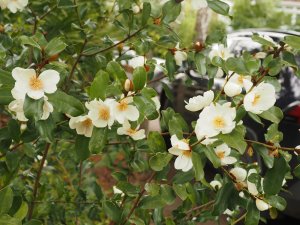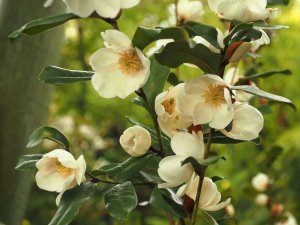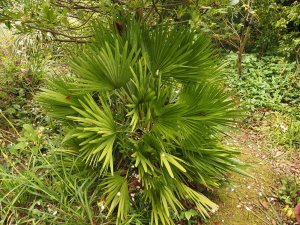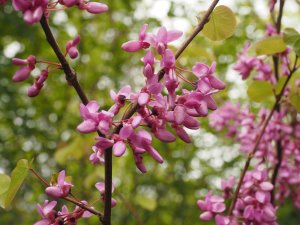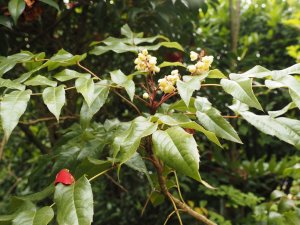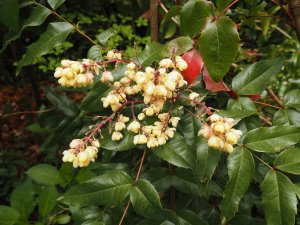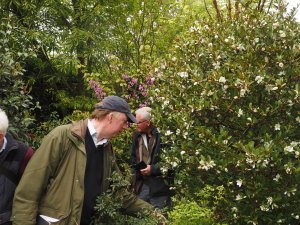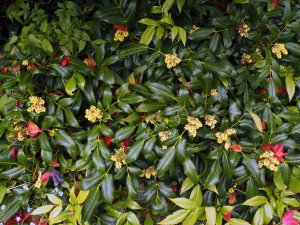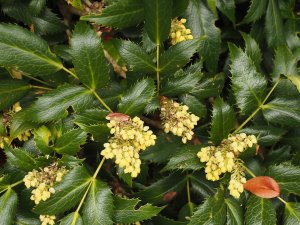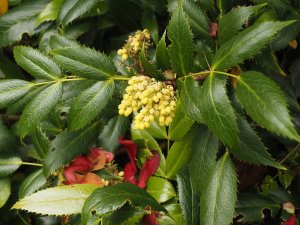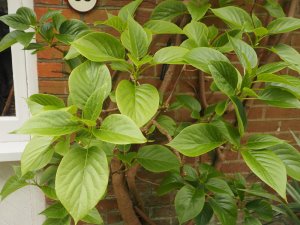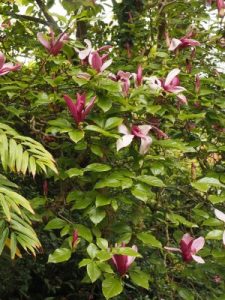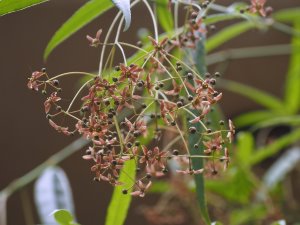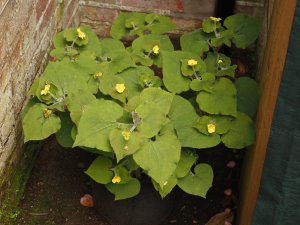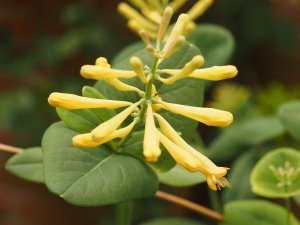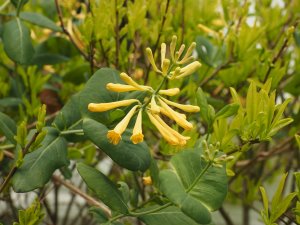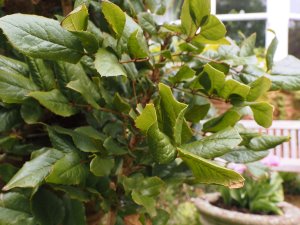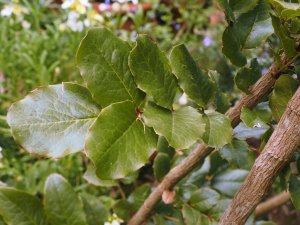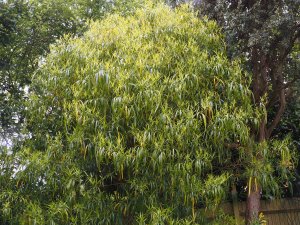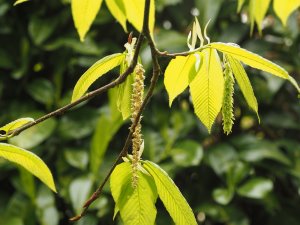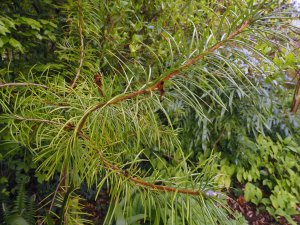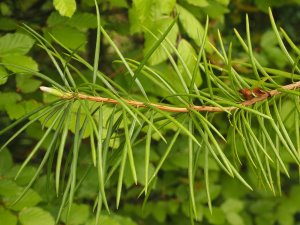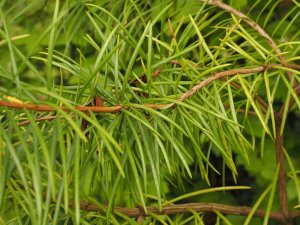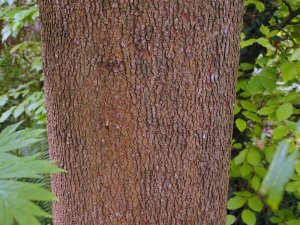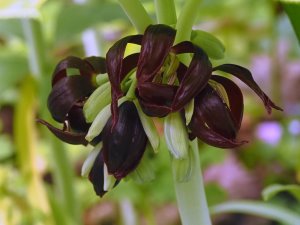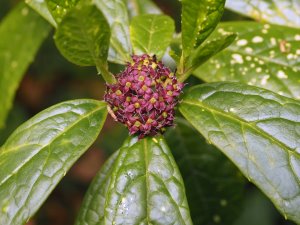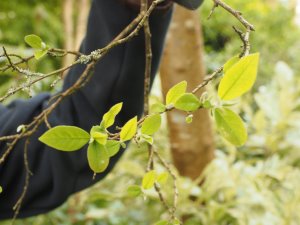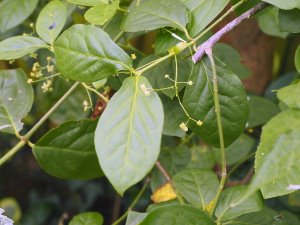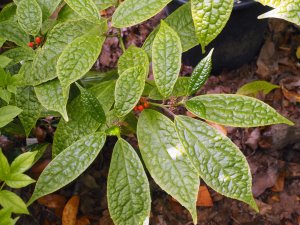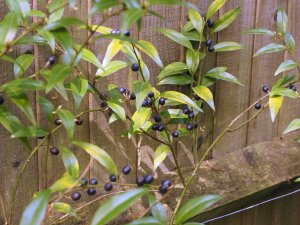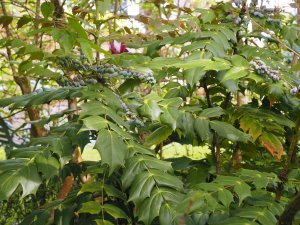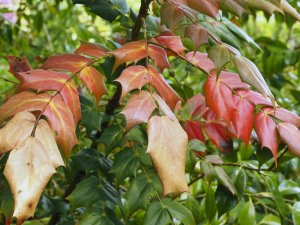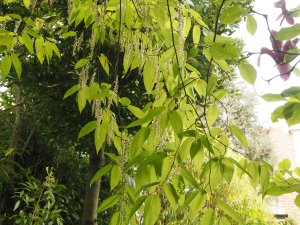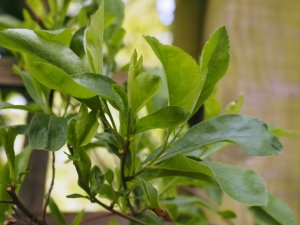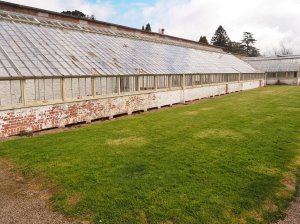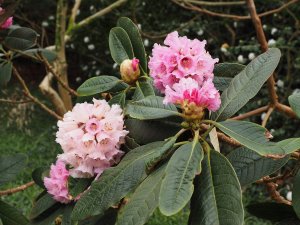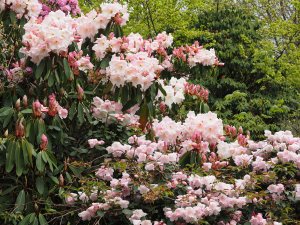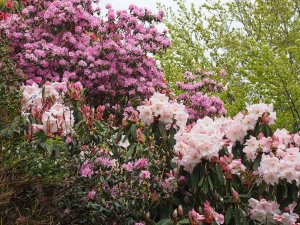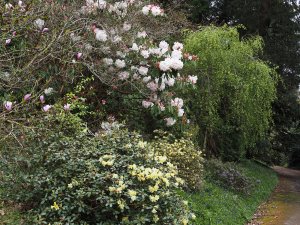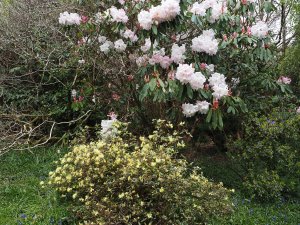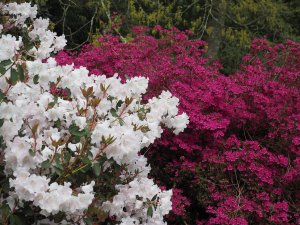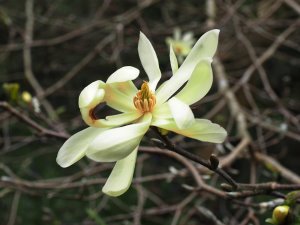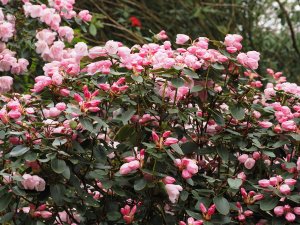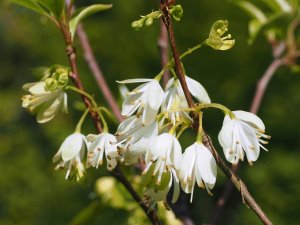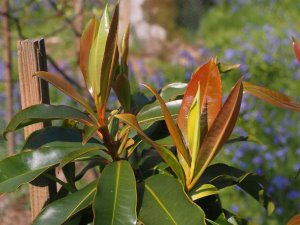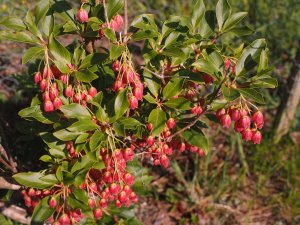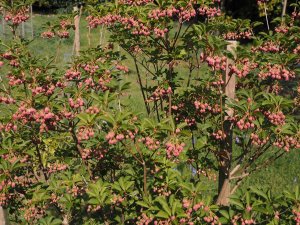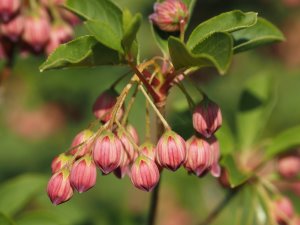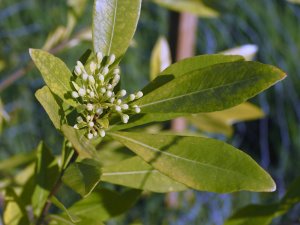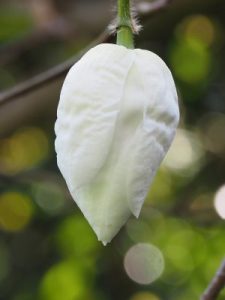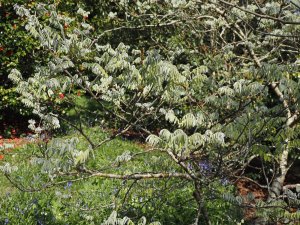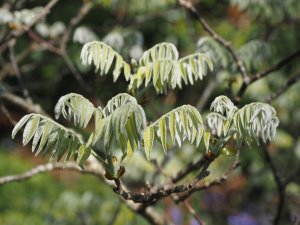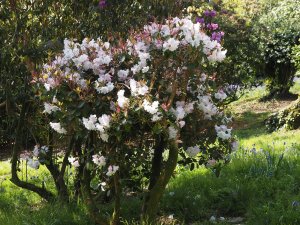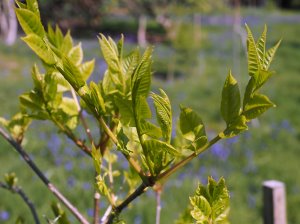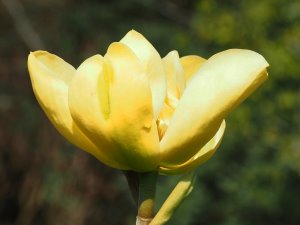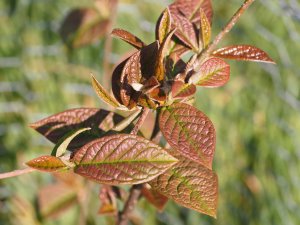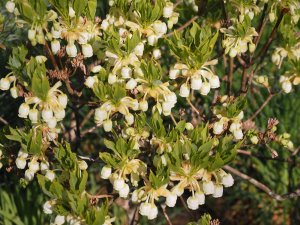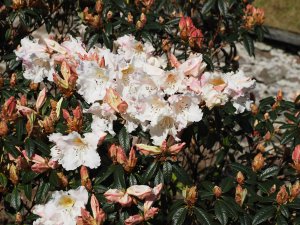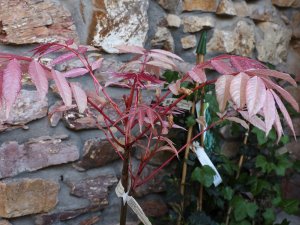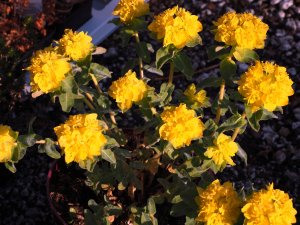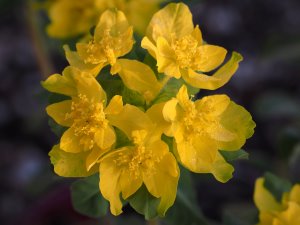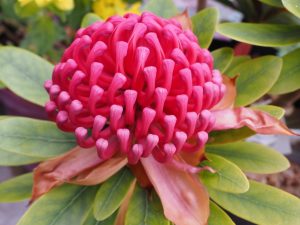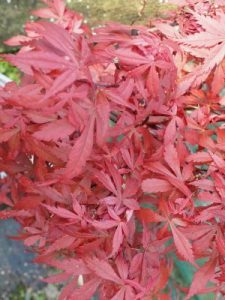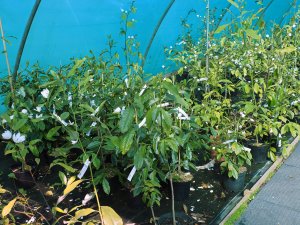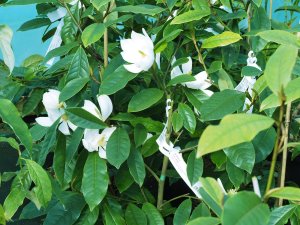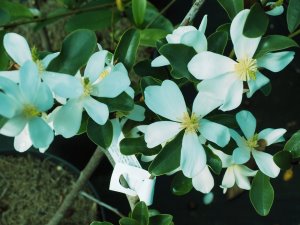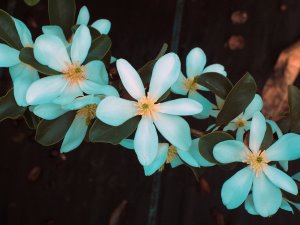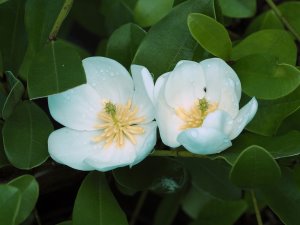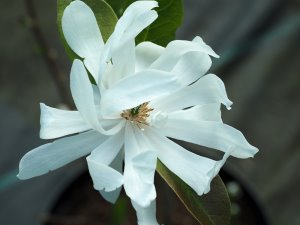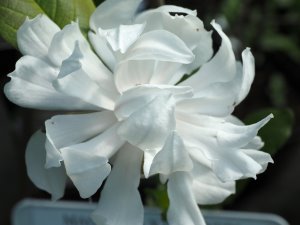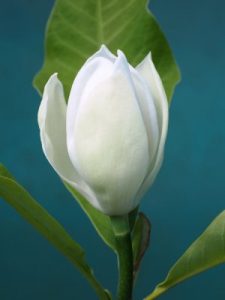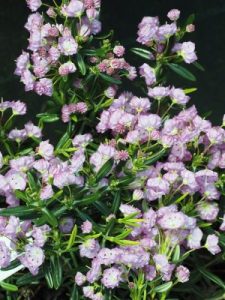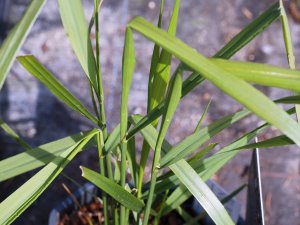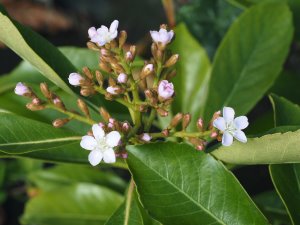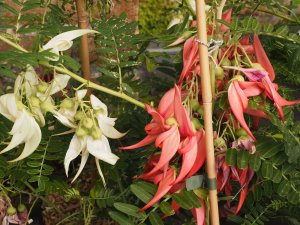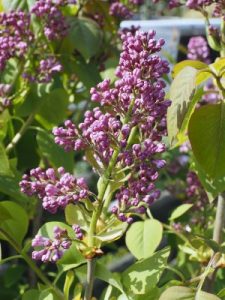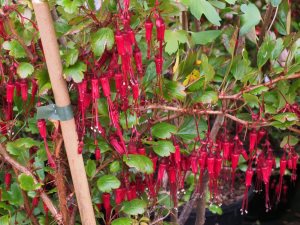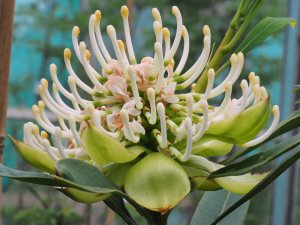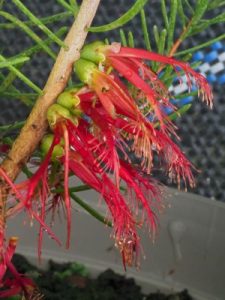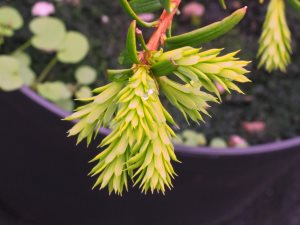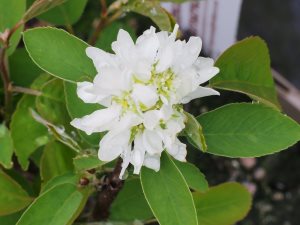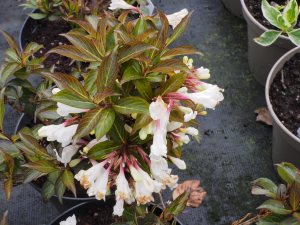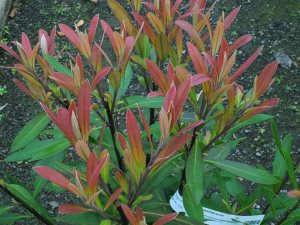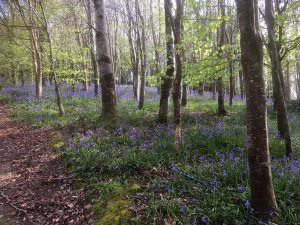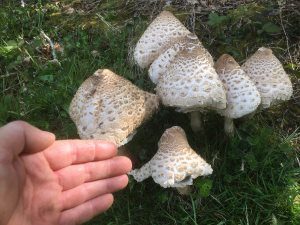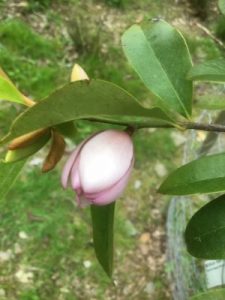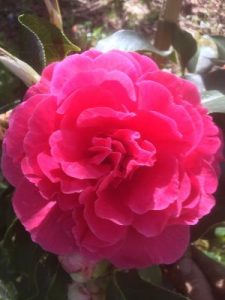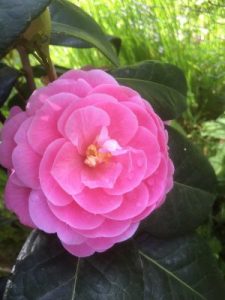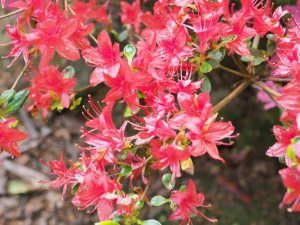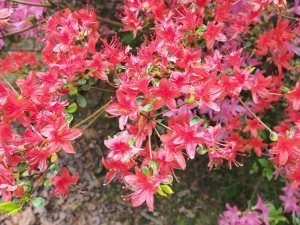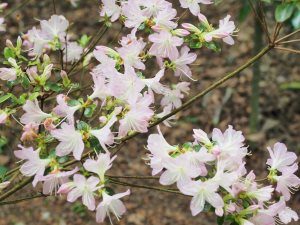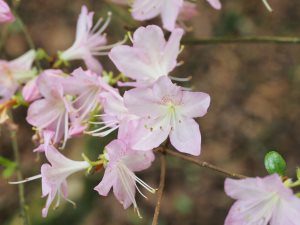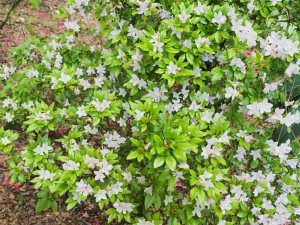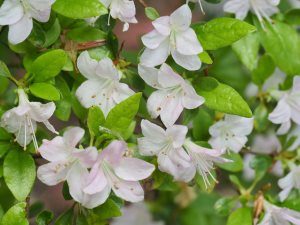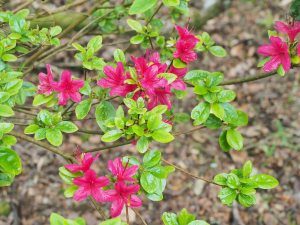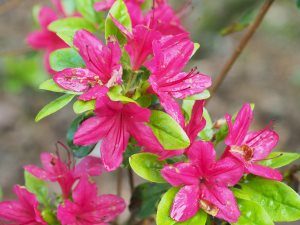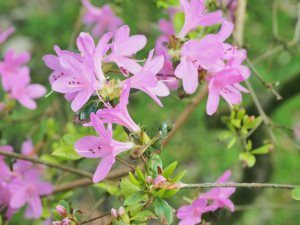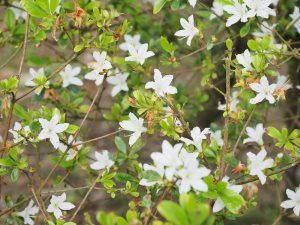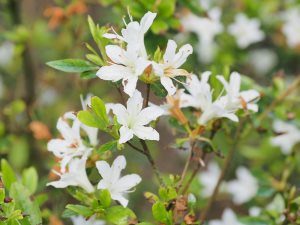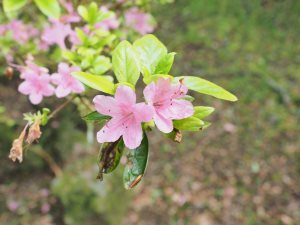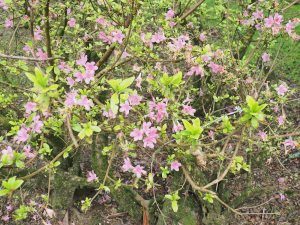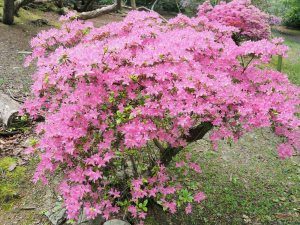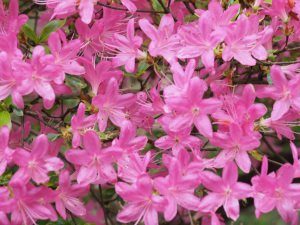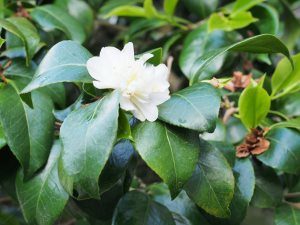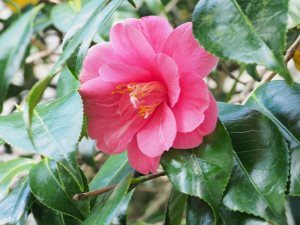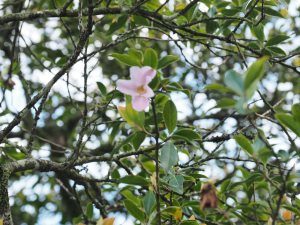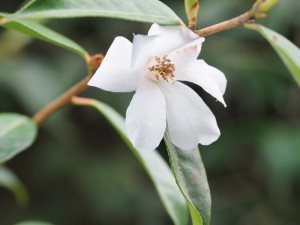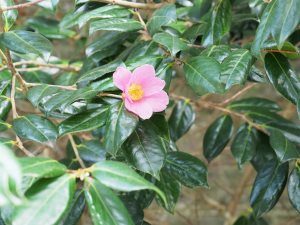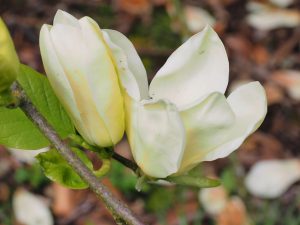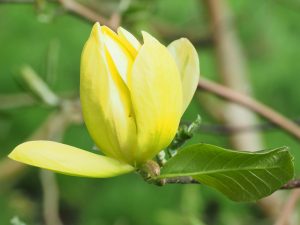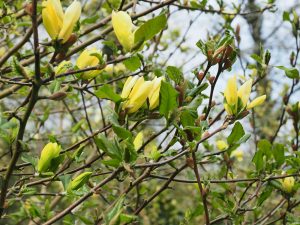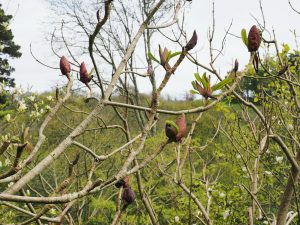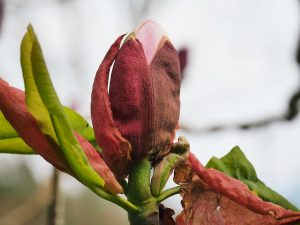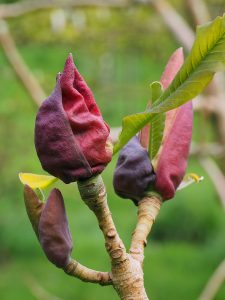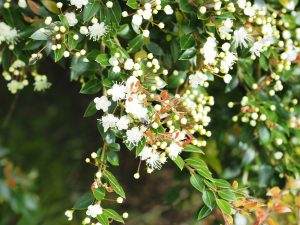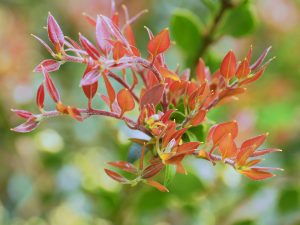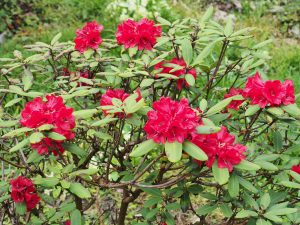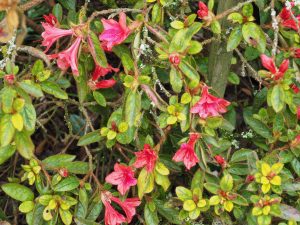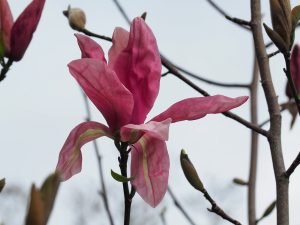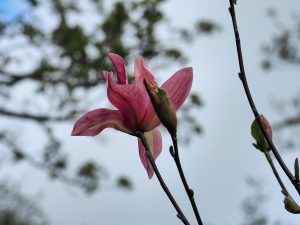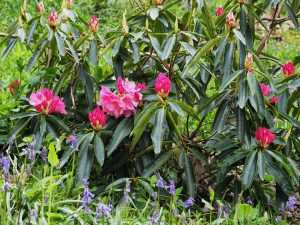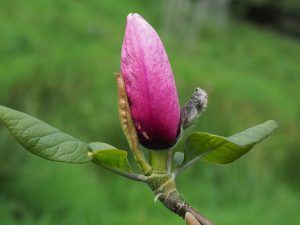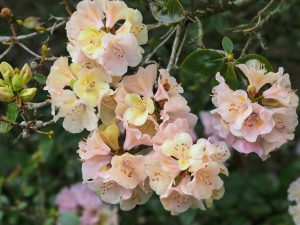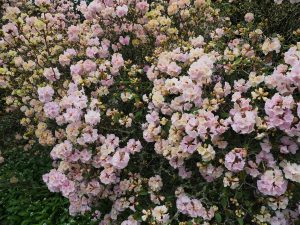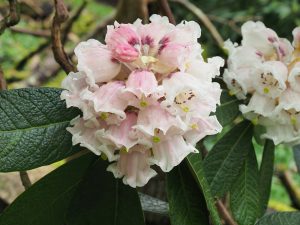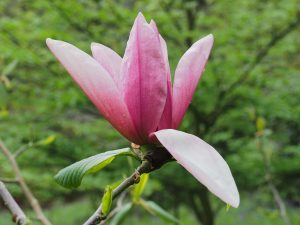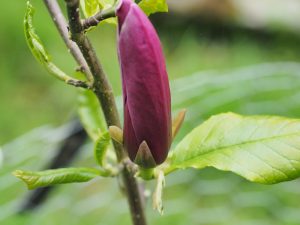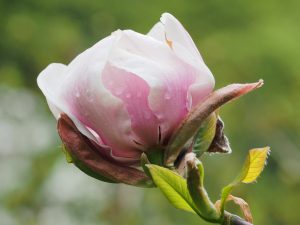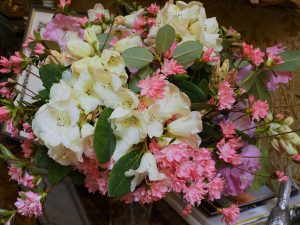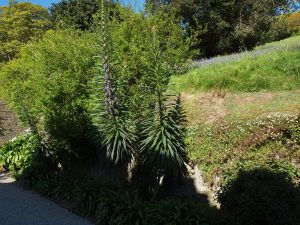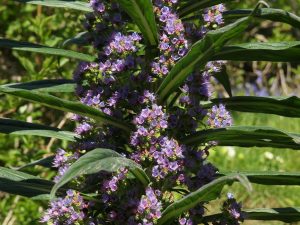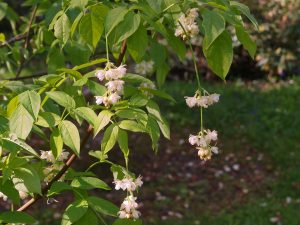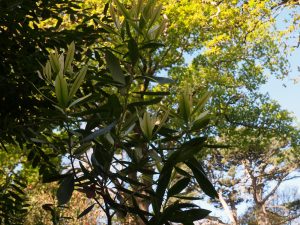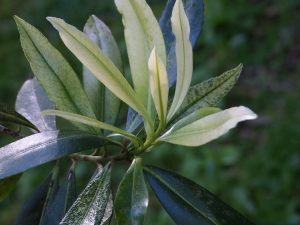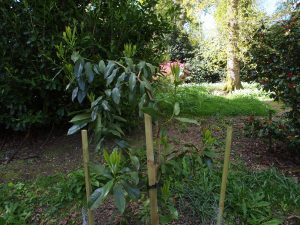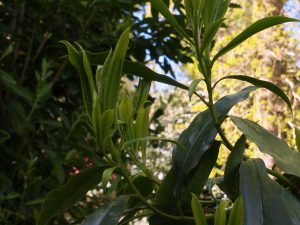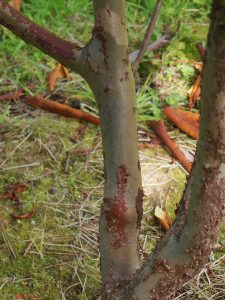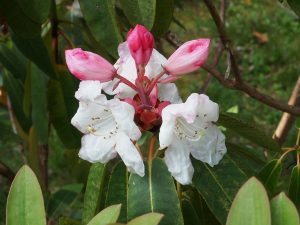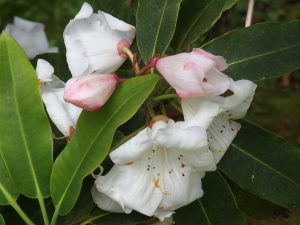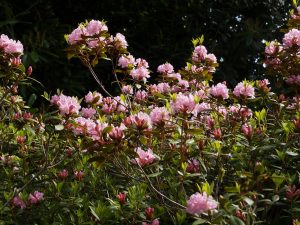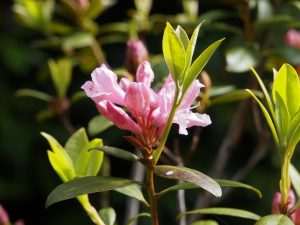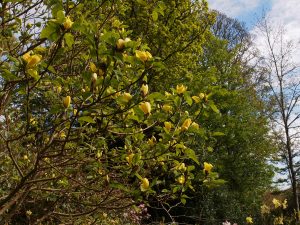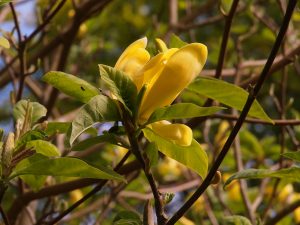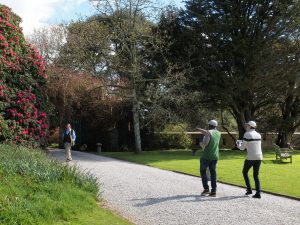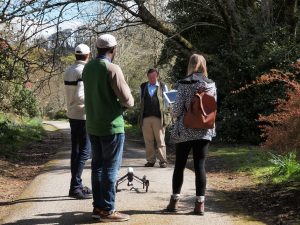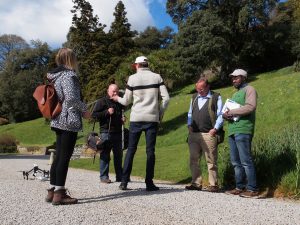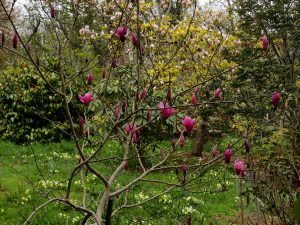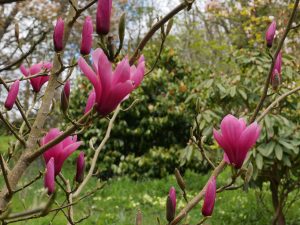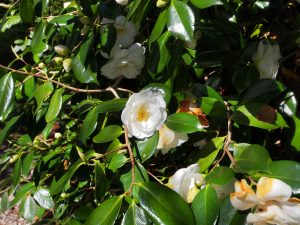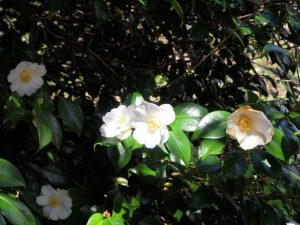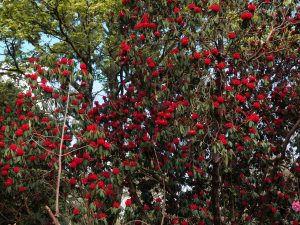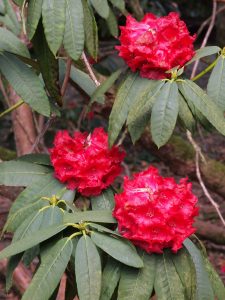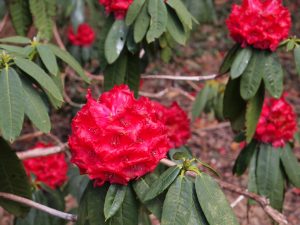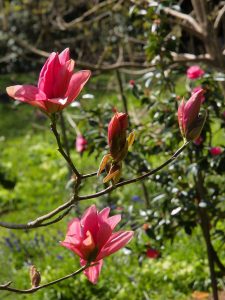2025 – CHW
A visit to Roy and Sue Lancaster’s garden in Chandlers Ford. Unsurprisingly I took more pictures of rare new plants here in this tiny area than in any other garden on our current trip. I have never seen such a small space with literally thousands of plants from numerous genus. It took us nearly 3 hours to see most of it! Unbelievably interesting from the greatest living plantsman. I am only going to show plants in flower and not the 30 or so species of Mahonia which you will now find (without flowers) on our website database.
Acer ‘White Tigress’ dominates the front garden.
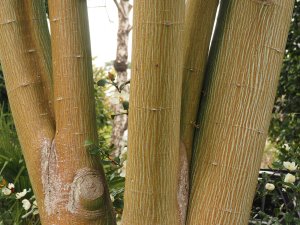
2024 – CHW
Castlewellan is owned by the Ministry of Agriculture/ Forest Service and was closed for major tree surgery work. The 12½ acre woodland garden is known as the Annesley Garden. We were shown around by head gardener, Alwyn Sinnamon and his delightfully knowledgeable team. Alwyn had visited Caerhays and had a tour with Jaimie this spring. The big problem this garden has is the 1 mile distance it is across the park to the public car park. A very well-known garden managed by people who understand that Castlewellan has to evolve when its many historic record trees finish their innings and not become a mausoleum. We were staggered by the size of the trees which we saw and there are many happy days of exploration of the arboretum and rhododendron garden on future visits. An exceptional and great garden with so many plants bearing the name Castlewellan.
The staff car park and lots of lottery funding for rebuilt greenhouses.
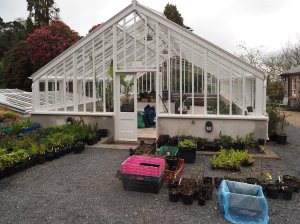
Click here for the complete day at Castlewellan and Seaforde.Seaforde is a remarkable collection bearing testament to the hard work and skill of Paddy and Anthea Forde over 60 years. To maintain and expand it in the next generation will require a big swing shovel. I spoke to Paddy 20 years ago about Phytophthora and ponticum. Seaforde did not dig theirs out then and it has had no ill effect.
2023 – CHW
A tour of Burncoose Gardens with 12 members of the Cornwall Garden Trust today. Cold east wind but the yellow magnolias looking good.
Rhododendron concinnum by the pond.
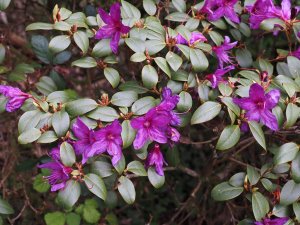
2022 – CHW
A pair of swallows rebuilding their nest in the dog kennels (as usual) and twittering happily.
A look at the new planting above the greenhouse.
What we think (Susyn Andrews) is the small growing (4m only) Fraxinus baroniana with its attractive yellow new growth. It has taken years to get to 3ft with multiple stems and deer nibbling.
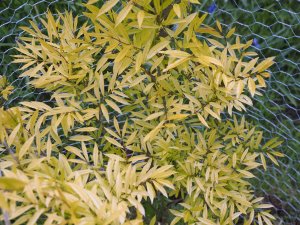
A Burncoose trip to finalise trip to finalise next year’s budget and implement pay-rises and bonuses.Toona sinensis ‘Flamingo’ with its startling pink new growth in the cash point.
In a ‘war’ there will always be profiteering and skulduggery. The insurance industry have belatedly got their PR machine to operate to tell us how much they will be paying out for the corona (£1.2bn).It is a total lie of course because very very few businesses have any ‘business interruption’ cover for something like corona. Those who might have, and thought that they did, have had their claims denied.The insurers and Lloyds are not going to pay up to businesses, and why should they, despite what will be a torrent of legal battles and pressure on the government to ‘do something’ (as for flood victims insurance in a government backed scheme). Read the contract!Since few people are driving their cars the main vehicle insurers are coining it on the lack of motor insurance accidents (or whiplash/bogus) claims. Let us see how they lower premiums for next year? Do not hold your breath!And then there are the travel companies, airlines, railways etc who are using people’s prepaid cash (and mine) to not refund what they have not delivered.The insurance industry’s media claims over the weekend should be seen for what they are. Defensive profiteering!No doubt the BBC will help them to promote this as another ‘entitlement’.Looking at Tunnel Field today at Burncoose with my brother and Rob Toy. Rob will spray the brambles off and we will then slash them down and spray any regrowth. Early next spring we will plant this 2 acre field as a new yellow magnolia garden which should be a new first for Cornwall to flower in April and May. My brother wants to restore the tunnel under the gardens to this field so that this can eventually be the public access. In the meantime a small path from the main drive. A few specimen conifers with the yellow magnolias and, later on, big clumps of tall growing rhododendrons. A great new project for the garden.Looking good in the nursery today:Ribes speciosum
I attach email correspondence with James Garnett from the Service des Espaces Verts et de l’Environnement (SEVE) in Nantes about Michelias with his pictures. At issue is the variation in the forms of Michelia doltsopa and whether the big plant here of Michelia floribunda is actually that species.
From: James Garnett
Sent: 16 April 2020 15:55
To: Charles Williams PA
Subject: Re: Magnolia martinii
[…]
I hope everyone is ok at Caerhays, here in France it’s starting to calm down a bit.. I’m only aloud to work in the arboretum twice a week, sometines only once, so it’s quit frustrating.
Thank god we have good french wine to help us cope with that situation..
Since I’m stuck at home most of the time, I’ve been working on difficult botany subjects like Michelias for example.
And just before the start of the crisis we went to a nursery in brittany (Arven) and he has a few mother plants at the back. We’ve seen different species, all from seeds collected in China, some from the Kunming Botanical Garden. And finally we’ve seen a true Magnolia floribunda in flower with its typical star shaped white flower and leaves with a silvery underside. I’ve read your article on Michelias in the IDS Yearbook 2017, I find it very interesting, it shows how difficult Michelias are to identify. Considering what I’ve seen in Europe and China, I don’t think your plant at Caerhays is Magnolia floribunda. At that same nursery we’ve also seen 2 different forms of Magnolia doltsopa, one white, similar to the old ones you have at Caerhays and one more yellowish. The next week, we went to the amazing arboretum of “La Roche Fauconnière” in Cherbourg and there, they have a big Magnolia doltsopa, planted in 1967 and it is a bit different from everything I’ve seen… I tend to conclud that M. doltsopa is a very variable species. At that same garden they also a huge Magnolia lanuginosa (Michelia velutina) with a copious amount of seeds in late winter. Do you have that species? if not we can keep one for you.
[…]
From: Charles Williams PA
Sent: 17 April 2020 13:52
To: ‘James Garnett’
Subject: RE: Magnolia martinii
[…]
The Michelia doltsopa puzzle which I wrote about was mainly prompted by Maurice Foster who strongly maintains that the larger plants at Caerhays at the top of the garden should be classified as Michelia manipurensis because of the velvety indumentum on the undersides of the leaves etc. The three other mature Michelias growing above the greenhouse are all a bit different to each other and very different indeed to what Maurice thinks is manipurensis. Tom’s view is that all the plants at Caerhays, including the one we call Michelia floribunda, are forms of doltsopa. He may, or may not, be right and this provides us with plenty of entertainment in future arguments.
[…]
Much of the spraying around young plants in the garden now complete. Along the way Jaimie discovered:How well the bluebells are now doing in full shade in the top section of Forty Acres Wood which was destroyed in the 1990 hurricane and replanted soon afterwards mainly with beech.
Camellia ‘Noblissima’ (first out November)
2018 – CHW
Off to Penvergate to view the best yellow magnolias.
Magnolia ‘Yellow Bird’ was sadly nearly over and I have missed it (planted 1997). The nearby Magnolia ‘Yellow Fever’ was not out yet (planted 1997).
A newish Rhododendron neriiflorum full out.
2017 – CHW
Amazingly some of the Echium pininana are already in flower and at least 12 feet tall. There was some white frost overnight, quickly burnt off in the early morning sun, but not enough to damage much or any new growth. Do echiums flower in April on Tresco? I wonder what the record height actually is?
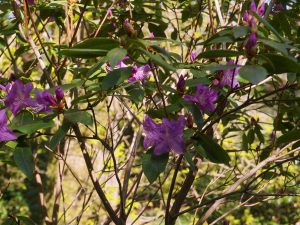
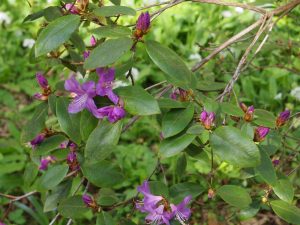
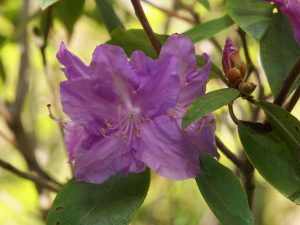
One day of ‘filming’ with a BBC crew from London who are prerecording rhododendron centenary clips for use in Chelsea Flower Show week TV broadcasts. For eight days they have to broadcast at least two hours of prime time TV so they need to bag a fair bit of it in advance. As expected the day is a write off in the cause of ‘publicity’.We start with two hours of drone filming which gets Karol excited as they have a very posh new drone in use. Whether we will ever get to see or obtain any of the stills from the overfly remains to be seen. We do three retakes of me walking through the arch from on high and picking off a few nearly dead flowers from a Rhododendron ‘Cornish Red’. Tedious!
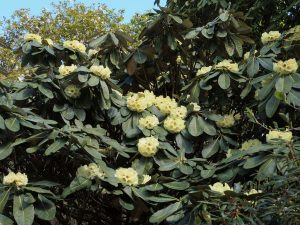
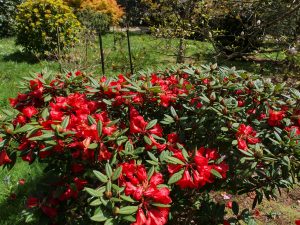
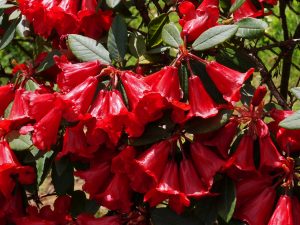
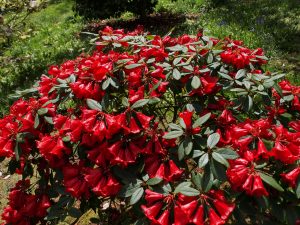
This all takes three hours with ‘Abs’ the producer. Thankfully it does not rain until we have finished. Abs also works for ‘The One Show’ and was not exactly a horticultural expert but at least the crew of three (plus two on the drone) was not quite as excessive as in past BBC performances.The afternoon was spent filming archive material indoors and took three hours.
Along the way I managed a few non BBC shots of:
Magnolia ‘Yakeo’ (probably) tucked away above the Main Ride tree ferns is nicely out but not on the 1997 onwards planting plans or not as this anyway.
Time for a review of the newer cherries planted in the last 15 to 20 years replacing JC’s batch which he imported at vast expense from Japan. Grafted cherries used to be a major feature on the drive but, as grafted plants, their lifespan is only 40 to 50 years and they die suddenly usually full of canker having grossly over-flowered.Just beyond the Four in Hand is a late flowering double white cherry which came in a batch from Hillier’s. With all the unusual Japanese names these obscure cherries present a naming problem.
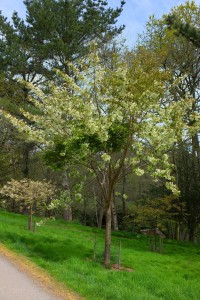
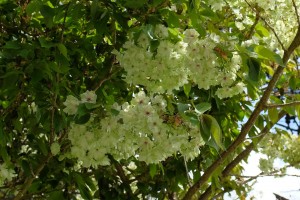
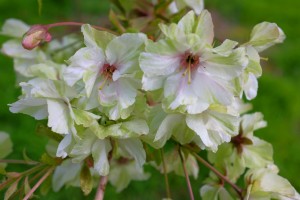
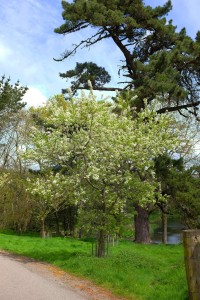
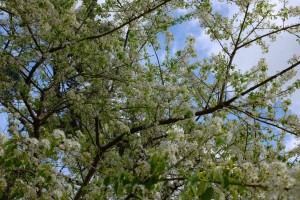
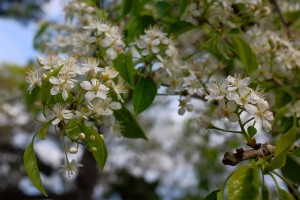
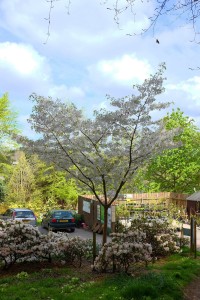
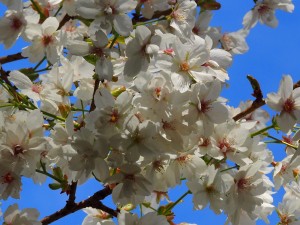
Prunus ‘Ahoi’ by the cashpoint is another winner and well worth its place. An avenue of these would be quite a sight and the flowering period is far longer than ‘Shirotae’ or‘Kanzan’.
1927 – JCW
Yesterday was the Truro Show, nothing very new there, the usual crush of trade exhibits, the light very bad.
1924 – JCW
The Truro Show. Too late for daffs, too early for the cream of the Rhodo’s. AMW’s Werrington. Lacteum the best rhodo thee. H Hodges fine form form of R glaucum. I ran it close but no-one saw it. Nothing really new but Magor’s Rhodo damaris was very nice indeed.
1923 – JCW
A few Orbiculares open, ¾ of the very few Auklandii are open. Fargesi, barbatum, argenteum and the Corylopsis are over. Triandrus (pure) not all open. No Maddeni hybrids are really open.
1920 – JCW
The Azaleas have started. R orbiculare is the best thing we have, the Auklandii’s hold on.
1904 – JCW
Picked the first seed pod Cyclamineus x De Graaf.
1902 – JCW
The first carmine pillars open, also sparacio or two. Auklandii nearly at their best. Recurvas open, a bloom or two on Altaclarence.
1899 – JCW
Went to Appleshaw the best things I saw were 33, 57 and 146, 84 and 414, also the new poet (244).




